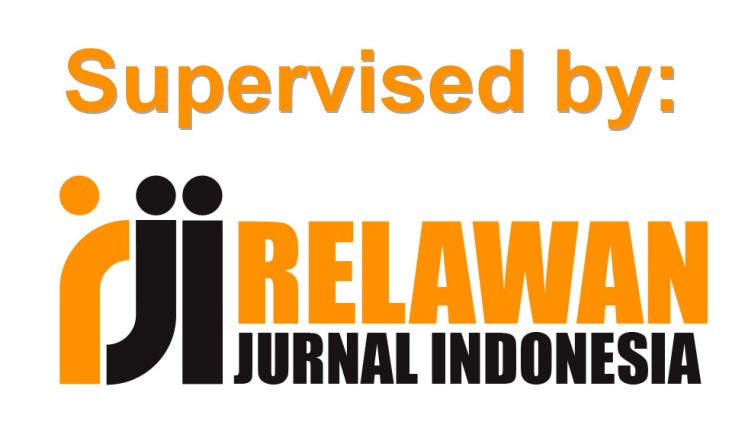Implementasi Metode Penghalusan Ekponensial Tunggal Dalam Prediksi Penjualan Buku
Abstract
The prediction of the quantity of product sales in the future is intended to control the amount of existing product stock, so that product shortages or excess stock can be minimized. When the quantity of sales can be predicted accurately, the fulfillment of consumer demand can be sought on time and the cooperation of the store with the relationship is maintained well so that the store can avoid losing both sales and consumers. The purpose of this study is to compare the effectiveness of the use of the Single Exponential Smoothing method and methods Double Exponential Smoothing with a smoothing parameter value a = 0.5 for forecasting sales by comparing the error values in the two methods using the Mean Squared Error (MSE) method, the MSE results of the Single Exponential Smoothing method is 4967.75 while the MSE Double Exponential Smoothing is 5113.03. Thus, the Single Exponential Smoothing method is more accurate than Double Exponential Smoothing in calculating book sales forecasting because it has a low MSE value.
Keywords
Full Text:
PDFReferences
R. Utami and S. Atmojo, “Perbandingan Metode Holt Exponential Smoothing dan Winter Exponential Smoothing Untuk Peramalan Penjualan Souvenir,” vol. 11, no. 2, pp. 123–130, 2017.
Z. A. Farhath, B. Arputhamary, and L. Arockiam, “A Survey on Arima Forecasting Using Time Series Model,” vol. 5, no. 8, pp. 104–109, 2016.
R. T. Vulandari and E. Rokhmati, “Asymmetries Model Of Volatility Return Indonesian Sharia Stock Index With Exponential Generalized Autoregressive Conditional Heteroscedasticity,” in Proceeding of International Conference On Research, Implementation And Education Of Mathematics And Sciences 2015, Yogyakarta State University, 2015, no. 17–19 May 2015, pp. 97–100.
D. T. Anggraeni, “Peramalan Harga Saham menggunakan Metode Autoregressive dan Web Scrapping pada Indeks Saham LQ45 dengan Python,” Rabit J. Teknol. dan Sist. Inf. Univrab, vol. 5, no. 2, pp. 138–145, 2020.
R. T. Vulandari, D. Remawati, Y. Retno, and H. Wijayanto, “Perbandingan Prediksi Tinggi Muka Air Bendungan Wonogiri dengan Single Exponential Smoothing dan Brown ’ s Exponential Smoothing,” J. Euclid, vol. 6, no. 2, pp. 167–176, 2018.
E. Ostertagova and O. Ostertag, “Forecasting Using Simple Exponential Smoothing Method,” Acta Electrotech. Inform., vol. 12, no. 3, pp. 62–66, 2012.
S. Hansun, “A New Approach of Brown ’ s Double Exponential Smoothing Method in Time Series Analysis,” Balk. J. Electr. Comput. Eng., vol. 4, no. 2, pp. 75–78, 2016.
K. Margi and S. Pendawa, “Analisa dan Penerapan Metode Single Exponential Smoothing untuk Prediksi Penjualan pada Periode Tertentu (Studi Kasus : PT. Media Cemara Kreasi),” Pros. SNATIF, vol. 3, no. 1998, pp. 259–266, 2015.
F. R. Perdana, Daryanto, and H. Wahyu, “Perbandingan Metode DES dengan TES pada Peramalan Penjualan Rokok,” Jember, 2012.
N. P. Y. Sukmarani, Statiswaty, and R. Ramadhan, “Penerapan Metode Exponential Smoothing pada Peramalan Penjualan dalam Penentuan Kuantitas Produksi Roti,” J. Semant., vol. 2, no. 1, pp. 229–236, 2016.
DOI: http://dx.doi.org/10.30646/tikomsin.v9i2.539
Refbacks
- There are currently no refbacks.
Editorial Office :
TIKomSiN : Jurnal Teknologi Informasi dan Komunikasi Sinar Nusantara
Published by STMIK Sinar Nusantara Surakarta
Address KH Samanhudi 84 - 86 Street, Laweyan Surakarta, Central Java, Indonesia
Postal Code: 57142, Phone & Fax: +62 271 716 500
Website: https://p3m.sinus.ac.id/jurnal/index.php/TIKomSiN
Email: tikomsin @ sinus.ac.id

This work is licensed under a Creative Commons Attribution-NonCommercial-ShareAlike 4.0 International License.










